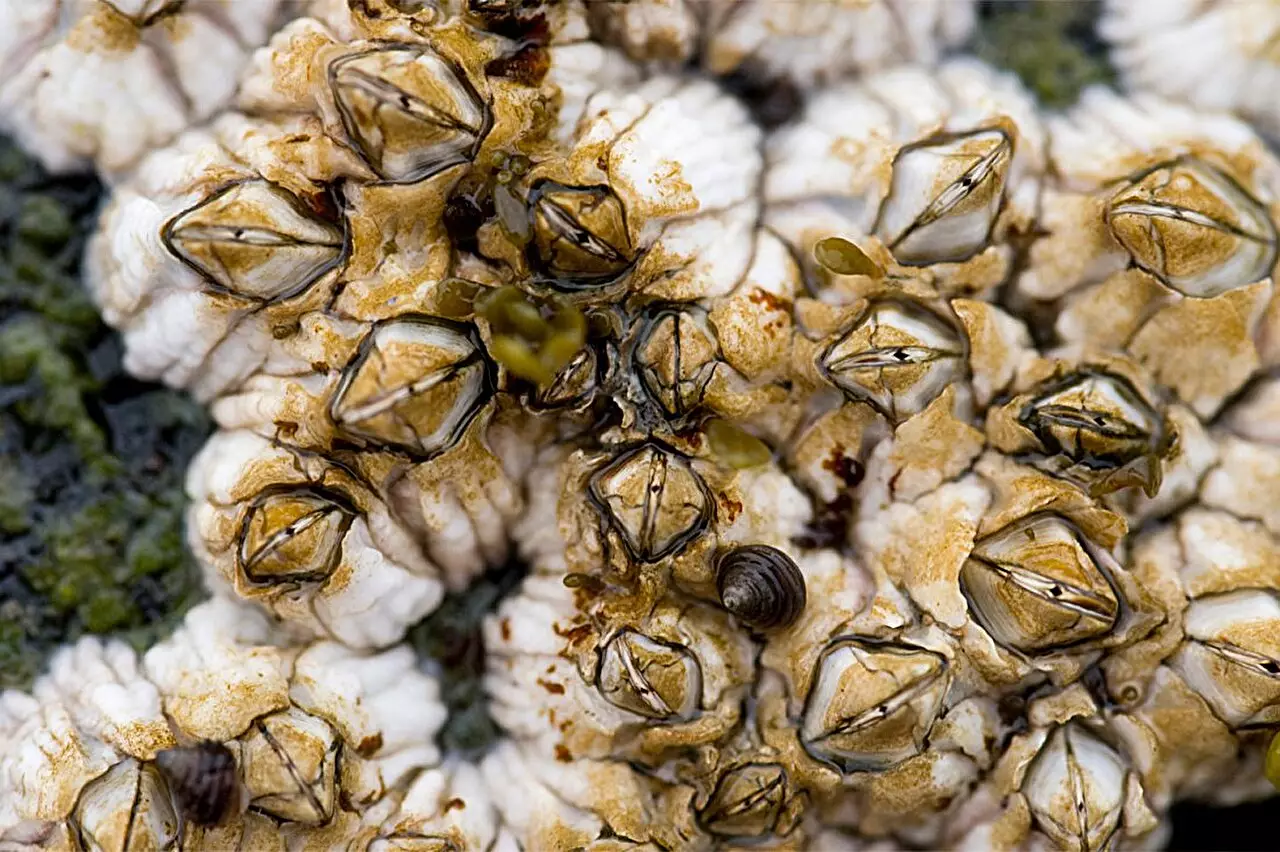Biofilms, composed of clusters of microorganisms including bacteria and fungi, form protective layers on various surfaces—be it medical devices, human tissue, or industrial pipes. These dense congregations create a significant hurdle in medical treatments, particularly for chronic wounds where antibiotic treatments often fall short. The organisms within biofilms are typically in a dormant state, rendering standard antibiotics ineffective. Research into alternative methods is crucial, as approximately 60% to 80% of wounds contain these problematic biofilms. Addressing the biofilm itself, rather than targeting individual bacteria, may pave the way for innovative treatments capable of rendering antibiotics effective once more.
Incorporating lessons from nature can lead to groundbreaking medical advancements. For instance, barnacles have developed an ingenious method to attach themselves to rocks while simultaneously using chemical compounds to cleanse their surfaces of bacterial debris. Inspired by this natural phenomenon, researchers led by Professor Abraham Joy at Northeastern University have explored how synthetic polymers can mimic this behavior to disrupt harmful biofilms. Their unique approach focuses on the physical structure of biofilms rather than the bacteria themselves, aiming to weaken the biofilm’s grip on surfaces, whether they are tissues in human wounds or surfaces within industrial applications.
Professor Joy’s research has demonstrated that a synthesized polymer shows remarkable potential in detaching biofilms, particularly those harboring Pseudomonas aeruginosa, a bacterium notorious for its resistance to antibiotics. A recent paper published in the Journal of the American Chemical Society revealed that the polymer removed nearly all of the biofilm associated with this challenging pathogen from submerged surfaces. Such findings suggest a novel strategic thinking in antibiotic design, moving away from merely attempting to kill bacteria towards effectively managing biofilms.
One of the primary focuses of this research is on utilizing the polymers as a treatment for chronic infections. Future applications may include administering these polymers in liquid form to infected wounds, offering a potential breakthrough in treating cases that are traditionally resistant to standard methodologies.
The innovative perspective does not seek to annihilate the bacteria residing within biofilms, but rather aims to weaken their structural support. To illustrate, Professor Joy compares the biofilm to a house and the bacteria to the inhabitants. Rather than addressing the residents directly, the research seeks to destabilize the framework surrounding them. This logic raises the possibility that once the biofilm is compromised, the bacteria can become active, thus allowing typical antibiotics to effectively target them.
Joy emphasizes the complexity of biofilm composition and how it varies between different types of bacteria. While the studied polymer effectively dismantled biofilms associated with Pseudomonas aeruginosa, it showed limited success against biofilms hosting Staphylococcus aureus and E. coli. The differences in the biological makeup of these biofilms necessitate further inquiries into how the polymer can be tailored to address a wider range of bacterial threats.
Looking ahead, significant research is directed at understanding the interactions between the polymer and the various components of different biofilms. The goal is to modify the polymer’s composition to enhance its effectiveness against specific bacterial strains, creating a more versatile tool for healthcare professionals in managing infections. Joy’s aspiration is to design polymers that cater specifically to the needs posed by different bacterial scenarios.
Achieving the optimal physical properties in these polymers is essential. The balance of hydrophobic and hydrophilic characteristics must be fine-tuned to ensure that the polymer can establish effective contact with biofilm structures, ultimately leading to their dislodgment. An overly viscous solution might fail to penetrate effectively, while one that is too diluted would simply wash away without achieving the desired effect.
This pioneering research is setting a precedent for rethinking antibiotic strategies and underscores the importance of considering the physical and mechanical behaviors of biofilms when devising treatment methods. As the scientific community begins to investigate these innovative pathways, the prospects of overcoming resistant infections seem more attainable, potentially transforming the therapeutic landscape for chronic wounds and industrial contamination alike. By pursuing this line of inquiry, there lies hope for a future equipped with advanced methodologies to combat the ever-evolving challenge posed by biofilms.

